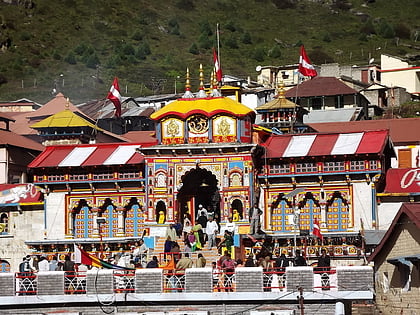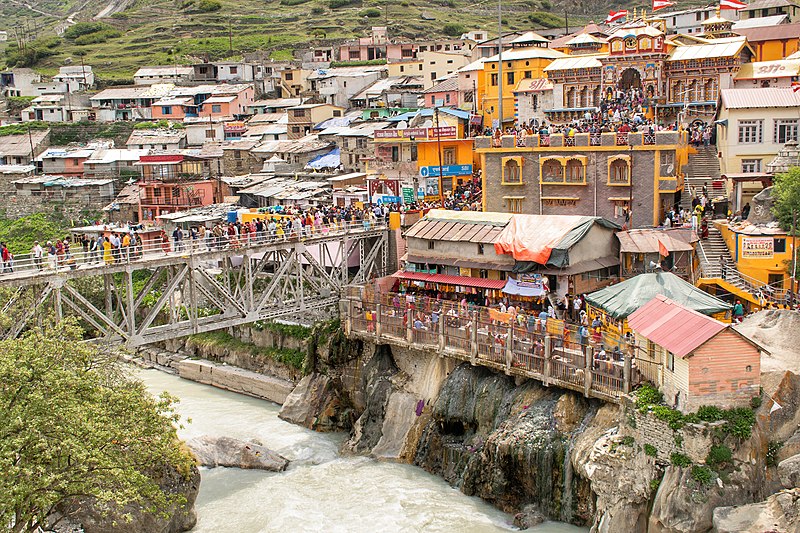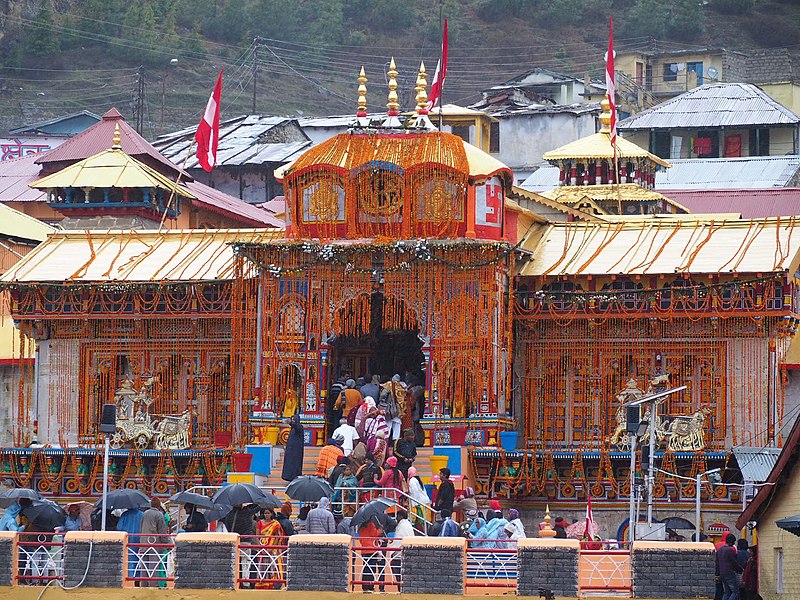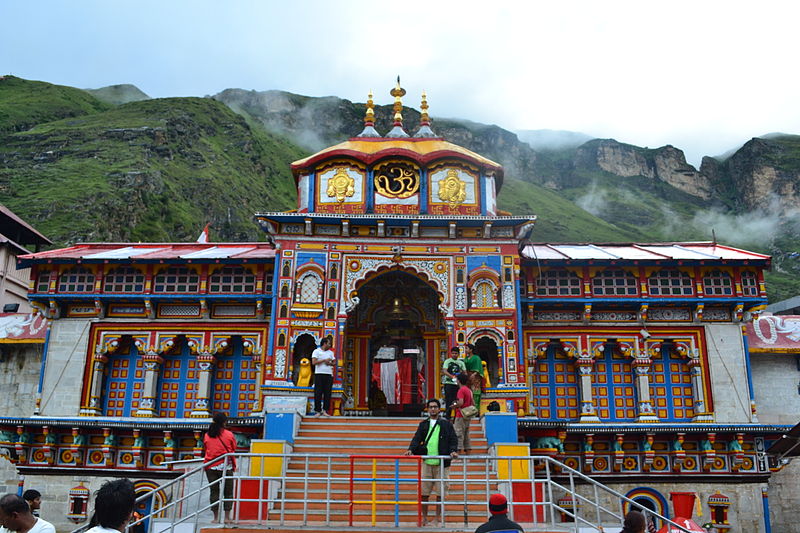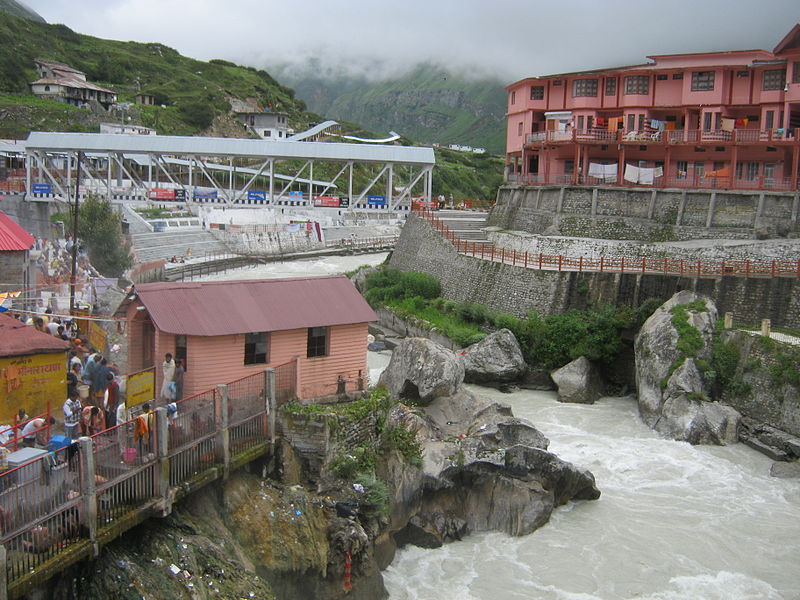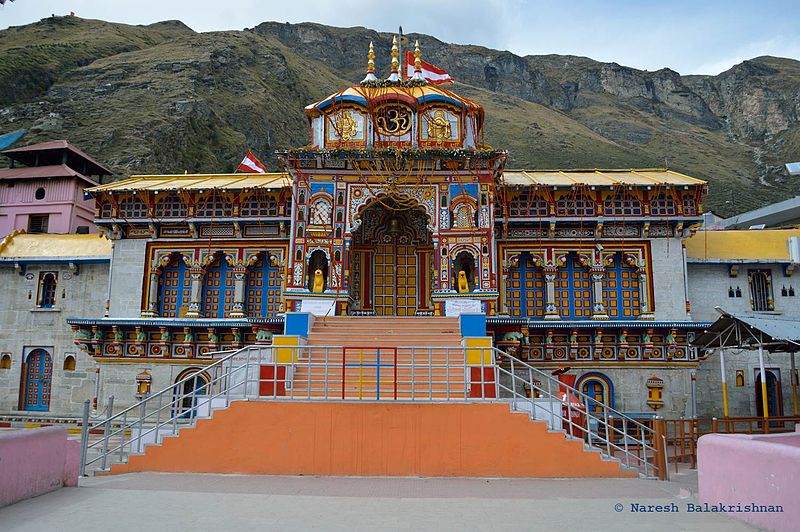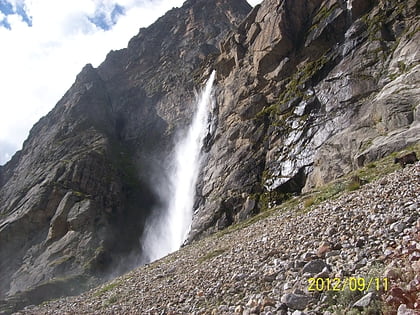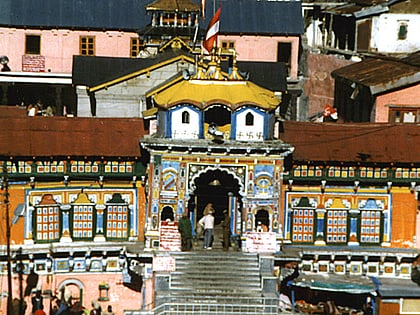Badrinath Temple, Badrinath
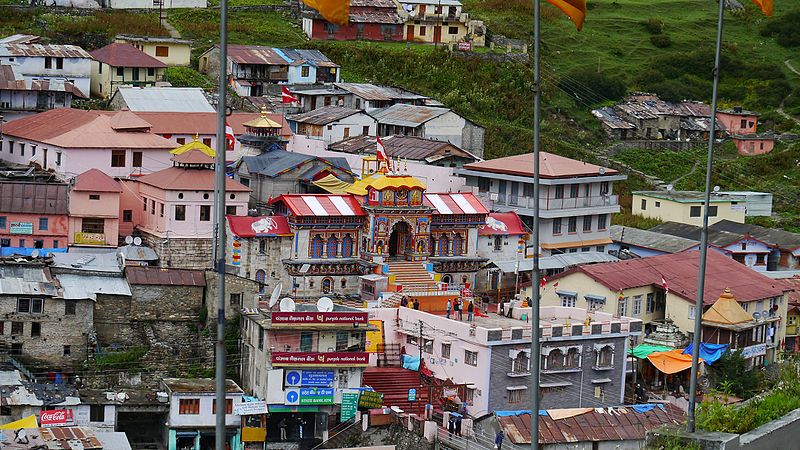
Facts and practical information
Nestled amidst the majestic Himalayan peaks, the Badrinath Temple stands as a beacon of spirituality in the town of Badrinath, India. This sacred Hindu shrine, dedicated to Lord Vishnu, is not only a testament to spiritual devotion but also a marvel of architecture that attracts countless pilgrims and tourists from around the world.
The temple, situated at an impressive altitude of 3,133 meters above sea level, is part of the Char Dham and Chota Char Dham pilgrimage circuits, considered to be among the holiest sites for Hindus. Its picturesque backdrop, with the Neelkanth peak looming in the distance, provides a serene and divine ambiance that enhances the spiritual experience of visitors.
The main deity of Badrinath Temple is Lord Vishnu, worshipped here in the form of Badrinarayan. The temple's architecture is typical of a Buddhist vihara, with the brightly painted facade adding vibrancy to the imposing stone structure. The complex also houses a Tapt Kund, a natural thermal spring that is believed to have medicinal properties.
Badrinath Temple is open to pilgrims typically between April and November, as the region is prone to heavy snowfall in the winter months, making access difficult. During these open months, the temple witnesses an influx of devotees who come to offer prayers and seek blessings.
For the average tourist, a visit to Badrinath Temple promises not only a spiritual awakening but also an opportunity to witness the grandeur of ancient temple architecture and the breathtaking beauty of the Himalayas. It is advisable to check the weather conditions and temple opening dates before planning your visit, and to prepare for the high altitude with appropriate clothing and acclimatization.
Badrinath Temple – popular in the area (distance from the attraction)
Nearby attractions include: Vasudhara Falls, Nilkantha Mountain, Char Dham, Sapta Badri.
